How to Get Rid of Bahia Grass (Paspalum) in Your Lawn
One of the toughest grassy weeds to control in home lawns across Australia is ‘Paspalum’ (Paspalum notatum) which is an aggressive grower that’s also incredibly resilient ...

After you’ve chosen a turf variety, you might be wondering if Installing your new lawn yourself is easy.
Follow the 7 steps below to ensure you lay & sustain a great looking & healthy lawn.
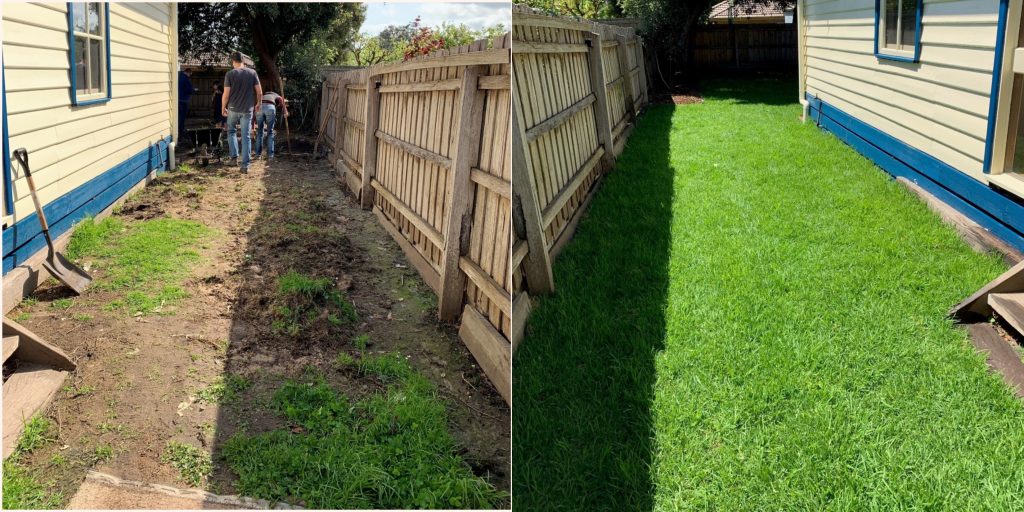
Grab a measuring tape and measure the area where you want the new lawn.
Always remember to add 10% more to the final figure so you have extra for cutting and shaping.
Learn how to measure the new lawn area here using our Turf Calculator.
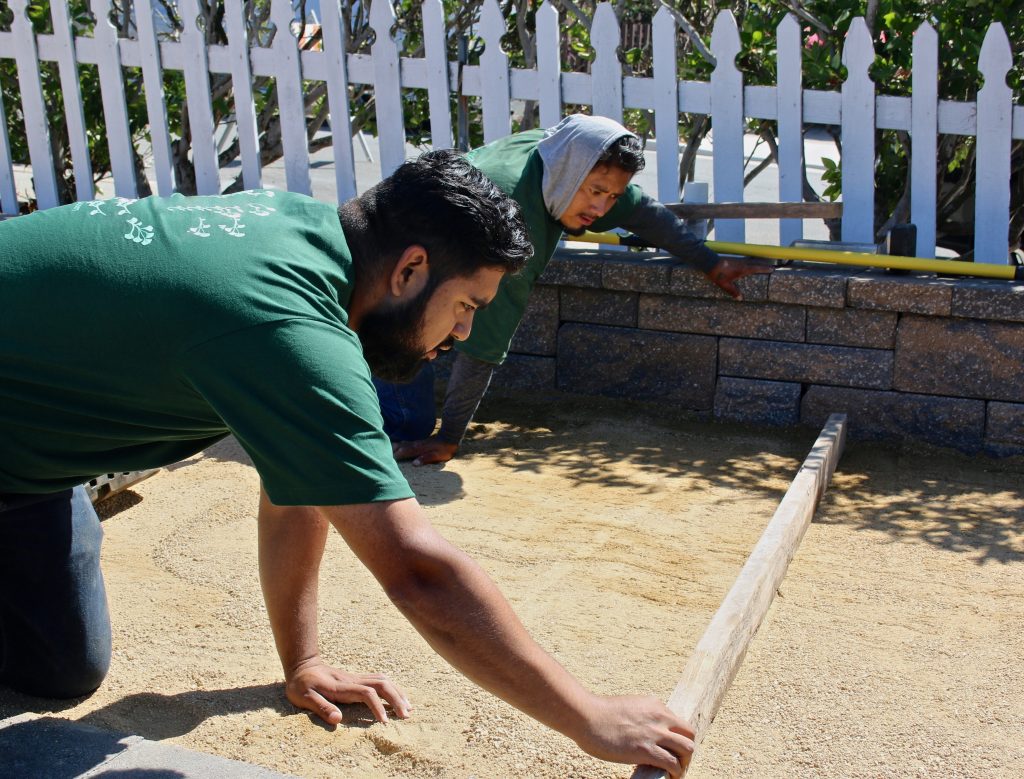
First, remove all existing weeds with a recommended weed killer.
For Couch use Fusilade Forte (Fluazifop-p) and for all other weeds, use Roundup (Glyphosate).
Wait seven days after the first spray and then water to germinate any other weeds. If needed, repeat spraying and wait a further 14 days.
Clear all debris from the site including rocks, building debris, dead lawn and weeds.
To prevent drainage issues, ensure your soil gradient is completely flat. Or if you have a slope ensure the soil gradient slopes away from your house foundations or pathways.
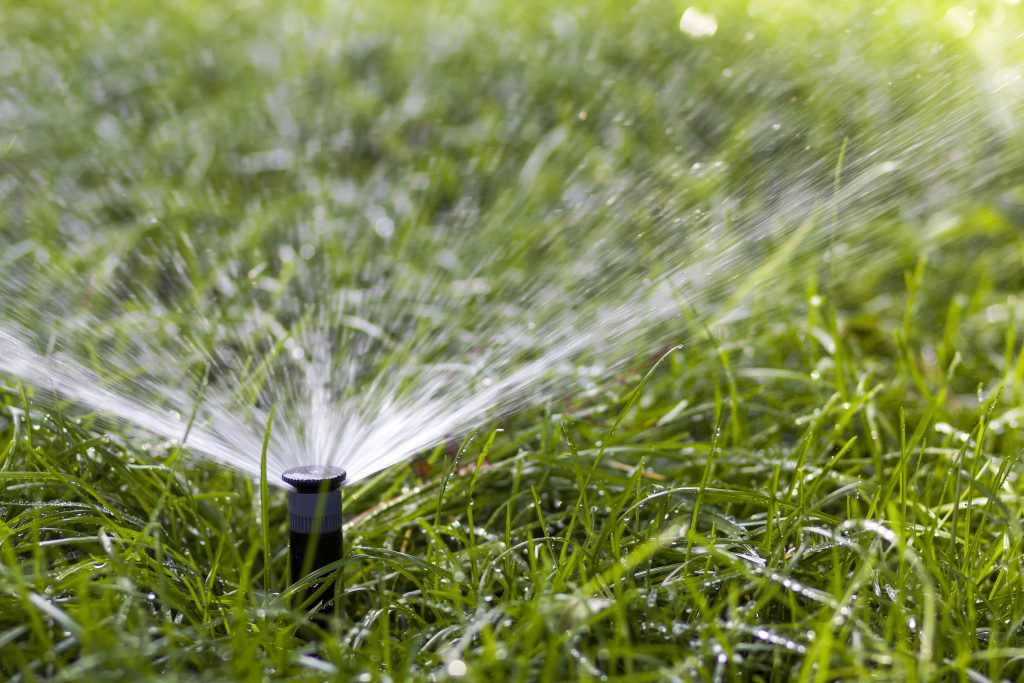
Now is the time to consider installing a watering system before you rake your soil.
There are two types of watering systems you could select – a traditional sprinkler-based system or a drip watering system.
An automatic watering system will give you a greener, thicker lawn and save time and water.
When preparing to lay your new lawn good site and soil prep ensures a good result BUT great site and soil prep ensures a GREAT RESULT – the importance of preparing the site cannot be overemphasised.
For optimum growth your new lawn needs 4 things, 3 of which are obtained from the soil:
If your soil is clay-based, apply gypsum before rotary hoeing the site. For sandy-based soils apply compost or organic matter.
Adding organic matter to a sandy soil profile provides more density and adding a light clay to a sandy soil profile provides more water retention.
Rotary hoe your soil site with good lawn underlay that consists of 70% sand to 30% soil to a minimum of between 50mm to 100mm deep.
How much soil do I get? Use this formula – Area x Depth x 1.6. Make sure you have worked out the area of lawn you need then multiply that figure by the depth of the soil and multiply by 1.6.
For example – 52m2 (Lawn Area) x 0.1 (100mm soil depth) x 1.6 = 8.32 tonnes of soil.
It is also vitally important you make sure you purchase a weed free soil and get a guarantee from the company your purchase the soil from.
Adding water retention products (crystals, peat) to a sandy loam soil profile will aid in water management after you lay your new lawn.
Soil preparation should be completed well ahead of laying your new turf to allow for soil development.
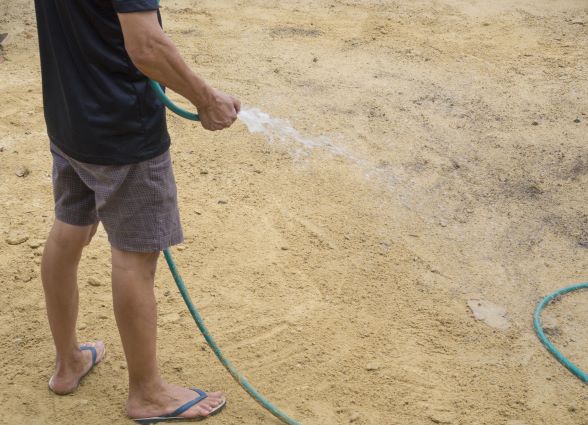 Prepare your soil for the new lawn by raking it to a smooth level finish.
Prepare your soil for the new lawn by raking it to a smooth level finish.
It is recommended you also apply some fertiliser, such as a good premium water-saving fertiliser with nutrient accelerator to enhance new growth.
Once you have your site properly prepared, give it a light watering to settle the soil and roll over it to smooth the base.
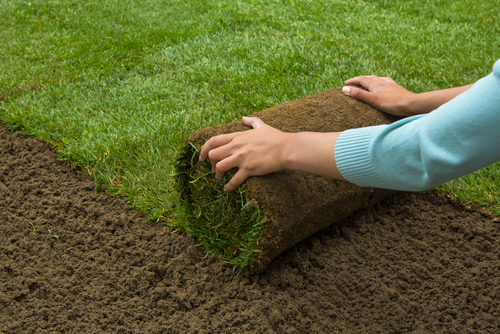
It is essential the turf be installed as soon as it’s delivered, as the longer the lawn is stacked on the pallet the more it becomes perishable.
Lightly moisten the new soil surface before laying your new lawn, especially in warmer months.
First, begin installing your new lawn by following the longest straight line – such as a fence or paved area. You can also run a thin rope along the area to act as a guide.
Make sure you stagger the joints, like brickwork, so they do not line up as this prevents drying out and soil erosion.
If your lawn’s joints are lined up this can cause flooding within the cracks.
Roll the lawn ensuring all joints are tightly bound together with no overlapping.
Stagger the joins similar to a brick pattern, this will ensure that joins are not in a straight line.
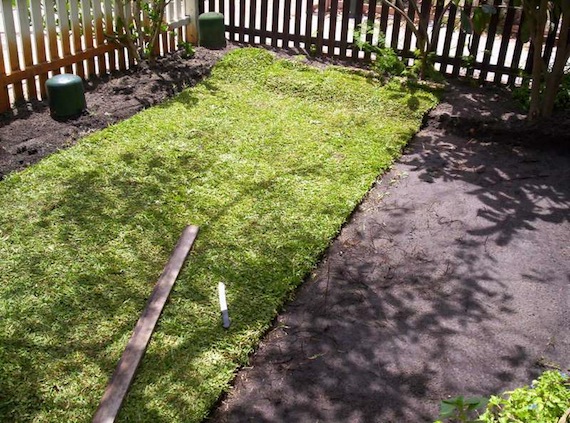 You can knock the rolls together with the back of a rack or shovel.
You can knock the rolls together with the back of a rack or shovel.
To trim corners, use a shovel or a large sharp knife.
If laying your new lawn on a slope – lay it across the slope.
Once the lawn is completely installed roll the entire area to improve the soil to lawn contact.
Watering is an extremely important part of installing a new lawn. Water within 30 minutes of laying your new lawn.
For the first two weeks avoid heavy use of the lawn and water two to three times a day.
Root development can take up to six weeks depending on the type of turf so its important that this first six weeks (weather dependant) are full of a lot of TLC for your turf investment!
Once established different lawn types will have different care requirements depending on your lawn variety but it is essential during establishment that all turf types are well watered for the first six weeks.
Please do not walk on your new turf until the lawn’s roots have taken.
Learn more here about how to water your new lawn here Watering new lawn
Our network of Growers offer great advice and are happy to assist you with any further questions you may have.
Your local Grower suppliers can easily be found with our online supplier locator tool.
OR click here if you are ready to get 3 quotes from your local growers today.
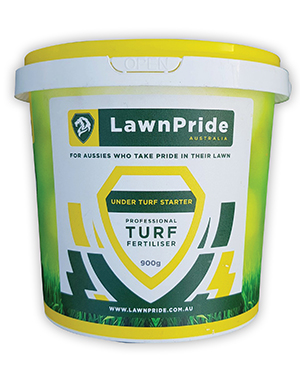
LawnPride Under Turf Starter 10-8-5 + Water Crystals 900gm Fertiliser uses slow-release technology to feed your newly laid lawn for up to three months. Suitable for Zoysia, Kikuyu, Couch and Buffalo grasses. Always read the safety directions and instructions on the product label before use.
SHOP NOW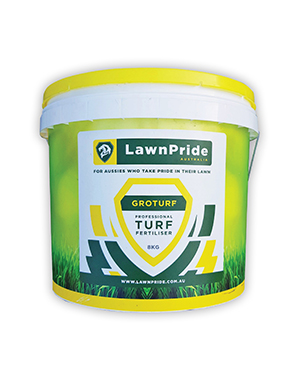
LawnPride Under Turf Starter 10-8-5 + Water Crystals 4kg Fertiliser uses slow-release technology to feed your newly laid lawn for up to three months. Suitable for Zoysia, Kikuyu, Couch and Buffalo grasses. Always read the safety directions and instructions on the product label before use.
SHOP NOW